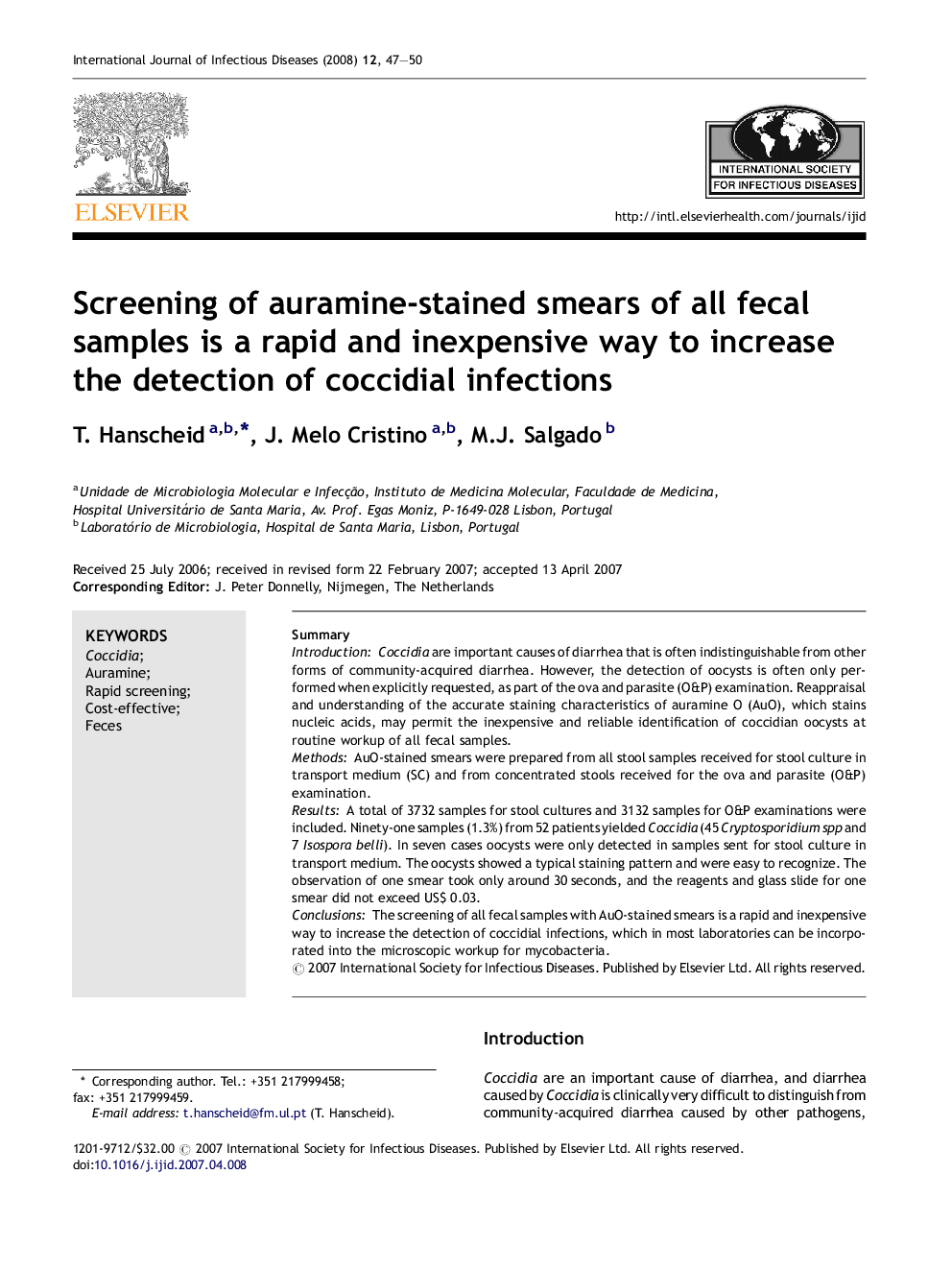| Article ID | Journal | Published Year | Pages | File Type |
|---|---|---|---|---|
| 3364162 | International Journal of Infectious Diseases | 2008 | 4 Pages |
SummaryIntroductionCoccidia are important causes of diarrhea that is often indistinguishable from other forms of community-acquired diarrhea. However, the detection of oocysts is often only performed when explicitly requested, as part of the ova and parasite (O&P) examination. Reappraisal and understanding of the accurate staining characteristics of auramine O (AuO), which stains nucleic acids, may permit the inexpensive and reliable identification of coccidian oocysts at routine workup of all fecal samples.MethodsAuO-stained smears were prepared from all stool samples received for stool culture in transport medium (SC) and from concentrated stools received for the ova and parasite (O&P) examination.ResultsA total of 3732 samples for stool cultures and 3132 samples for O&P examinations were included. Ninety-one samples (1.3%) from 52 patients yielded Coccidia (45 Cryptosporidium spp and 7 Isospora belli). In seven cases oocysts were only detected in samples sent for stool culture in transport medium. The oocysts showed a typical staining pattern and were easy to recognize. The observation of one smear took only around 30 seconds, and the reagents and glass slide for one smear did not exceed US$ 0.03.ConclusionsThe screening of all fecal samples with AuO-stained smears is a rapid and inexpensive way to increase the detection of coccidial infections, which in most laboratories can be incorporated into the microscopic workup for mycobacteria.
